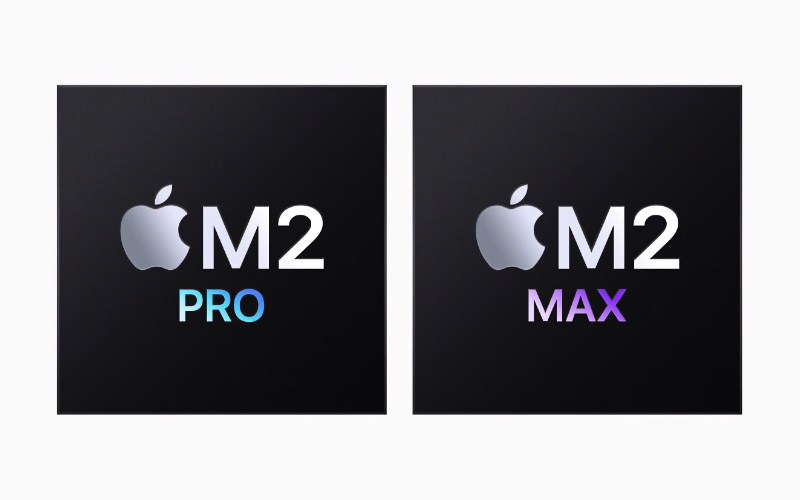

Apple today unveiled the M2 Pro and M2 Max, its two next-generation SoCs (systems on a chip) for use in the newly refreshed MacBook Pro and Mac mini models also announced today.
M2 Pro scales up the architecture of M2 to deliver an up to 12-core CPU and up to 19-core GPU, together with up to 32GB of fast unified memory. M2 Max builds on the capabilities of M2 Pro, including an up to 38-core GPU, double the unified memory bandwidth, and up to 96GB of unified memory.
Built using a second-generation 5-nanometer process technology, M2 Pro consists of 40 billion transistors — nearly 20 percent more than M1 Pro, and double the amount in M2. It features 200GB/s of unified memory bandwidth — twice that of M2 — and up to 32GB of low-latency unified memory. The next-generation 10- or 12-core CPU consists of up to eight high-performance cores and four high-efficiency cores, resulting in multithreaded CPU performance that is up to 20 percent faster than the 10-core CPU in M1 Pro. Apps like Adobe Photoshop run heavy workloads faster than ever, and compiling in Xcode is up to 2.5x faster than on the fastest Intel-based MacBook Pro.
The M2 Pro’s GPU can be configured with up to 19 graphics cores – three more than in the M1 Pro – and it boasts a larger L2 cache, providing graphics up to 30% faster than with M1 Pro.
M2 Max has 67 billion transistors — 10 billion more than M1 Max and more than 3x that of M2. Its 400GB/s of unified memory bandwidth is twice that of M2 Pro, 4x that of M2, and supports up to 96GB of fast unified memory.
M2 Max features the same next-generation 12-core CPU as M2 Pro. The GPU has up to 38 cores and is paired with a larger L2 cache. Graphics speeds climb up to 30% faster than M1 Max.